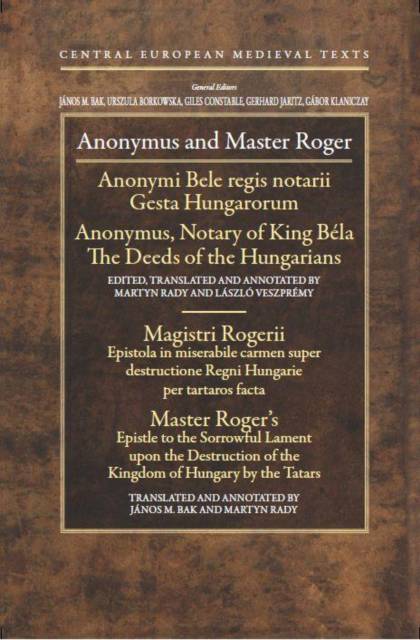
- Afhalen na 1 uur in een winkel met voorraad
- Gratis thuislevering in België vanaf € 30
- Ruim aanbod met 7 miljoen producten
- Afhalen na 1 uur in een winkel met voorraad
- Gratis thuislevering in België vanaf € 30
- Ruim aanbod met 7 miljoen producten
Zoeken
Omschrijving
Contains two very different narratives; both are for the first time presented in an updated Latin text with an annotated English translation.An anonymous notary of King Bela of Hungary wrote a Latin Gesta Hungarorum (ca. 1200/10), a literary composition about the mythical origins of the Hungarians and their conquest of the Carpathian Basin. Anonymus tried to (re)construct the events and protagonists--including ethnic groups--of several centuries before from the names of places, rivers, and mountains of his time, assuming that these retained the memory of times past. One of his major "inventions" was the inclusion of Attila the Hun into the Hungarian royal genealogy, a feature later developed into the myth of Hun-Hungarian continuity.The Epistle to the Sorrowful Lament upon the Destruction of the Kingdom of Hungary by the Tartars of Master Roger includes an eyewitness account of the Mongol invasion in 1241-2, beginning with an analysis of the political conditions under King Bela IV and ending with the king's return to the devastated country.
Specificaties
Betrokkenen
- Uitgeverij:
Inhoud
- Aantal bladzijden:
- 324
- Reeks:
- Reeksnummer:
- nr. 5
Eigenschappen
- Productcode (EAN):
- 9789639776951
- Verschijningsdatum:
- 1/07/2010
- Uitvoering:
- Hardcover
- Formaat:
- Genaaid
- Afmetingen:
- 155 mm x 231 mm
- Gewicht:
- 635 g

Alleen bij Standaard Boekhandel
+ 249 punten op je klantenkaart van Standaard Boekhandel
Beoordelingen
We publiceren alleen reviews die voldoen aan de voorwaarden voor reviews. Bekijk onze voorwaarden voor reviews.







